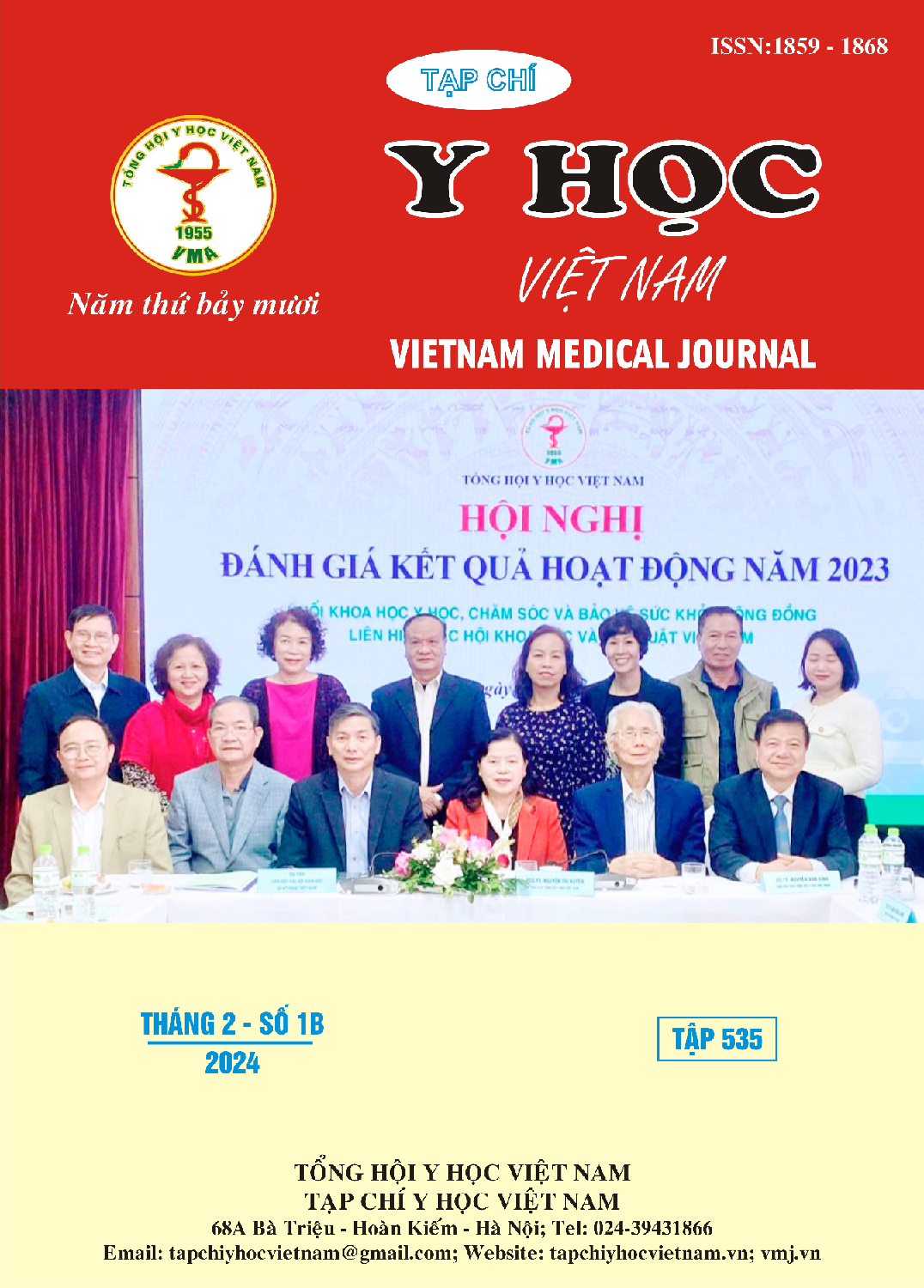EFFECTIVENESS OF INTERVENTION TO IMPROVE PAIN MANAGEMENT PRACTICE FOR NURSES AT HAI DUONG PROVINCE GENERAL HOSPITAL
Main Article Content
Abstract
Objective: The study aims to evaluate the effectiveness of interventions to improve pain management practices of nurses at Hai Duong Provincial General Hospital. Methods: A randomized controlled trial study was conducted on 47 nurses in each group (intervention and control group). Results: After 1 month of intervention, the proportion of nurses with good practice in the intervention group increased statistically significantly from 29.8% to 74.5% (p=0.001). In contrast, the control group tended to decrease but was not statistically significant from 23.4% of nurses with good practice to 8.55% (p=0.092). The Chi Square test showed that after one month of intervention, there was a significant difference between the two groups in terms of good practice (χ2 = 42.11, p = 0.000). Conclusions: Education combined with a team of experts and a pain management manual has a significant positive impact on nursing pain management practice
Article Details
Keywords
Practice, pain management, intervention, nurse
References
2. Vu P.H., Tran D.V., Le Y.T. et al. (2020). Postoperative Pain Management among Registered Nurses in a Vietnamese Hospital. Scientific World Journal, 2020, 1-6.
3. Germossa G.N., Hellesø R., Sjetne I.S. (2019). Hospitalized patients' pain experience before and after the introduction of a nurse-based pain management programme: a separate sample pre and post study. BMC Nursing, 18(40), 1-9.
4. Grommi S., Voutilainen A., Vaajoki A., et al. (2021). Educating Registered Nurses for Pain Knowledge and Documentation Management: A Randomized Controlled Trial. International Journal of Caring Sciences, 4(2), 919-929
5. Rababa A., Hayajneh. (2021). Nurses' perceived barriers to and facilitators of pain assessment and management in critical care patients: A systematic review. J Pain Res, 14, 3475-3491.
6. World Health Organization (2017): Process of translation and adaptation of instruments. [http://www.who.int/substance_abuse/research_to ols/translation/en/].
7. Song W., Eaton L.H., Gordon D.B., et al. (2015). Evaluation of Evidencebased Nursing Pain Management Practice. Pain Management Nursing, 16(4), 456-463.
8. Aqoul E.A, Obaids A, Jarrah I, et al. (2015). Effectiveness of Education Program on Nursing Knowledge and Attitude toward Pain Management. Asia Pac J Oncol Nurs, 7(4), 382-388.
9. Mohasen S.K, Hassan H.S. (2022). Effectiveness of an interventional program on nurses practices regarding postoperative pain management among adult patient with abdominal surgery. International Journal of Health Sciences, 6(2), 7842–7851.
10. Trudeau K.J., Hildebrand C., Garg, P. et al. (2017). A randomized controlled trial of the effect of online pain management education on primary care providers. Pain Medicine, 18(4), 680-692.


